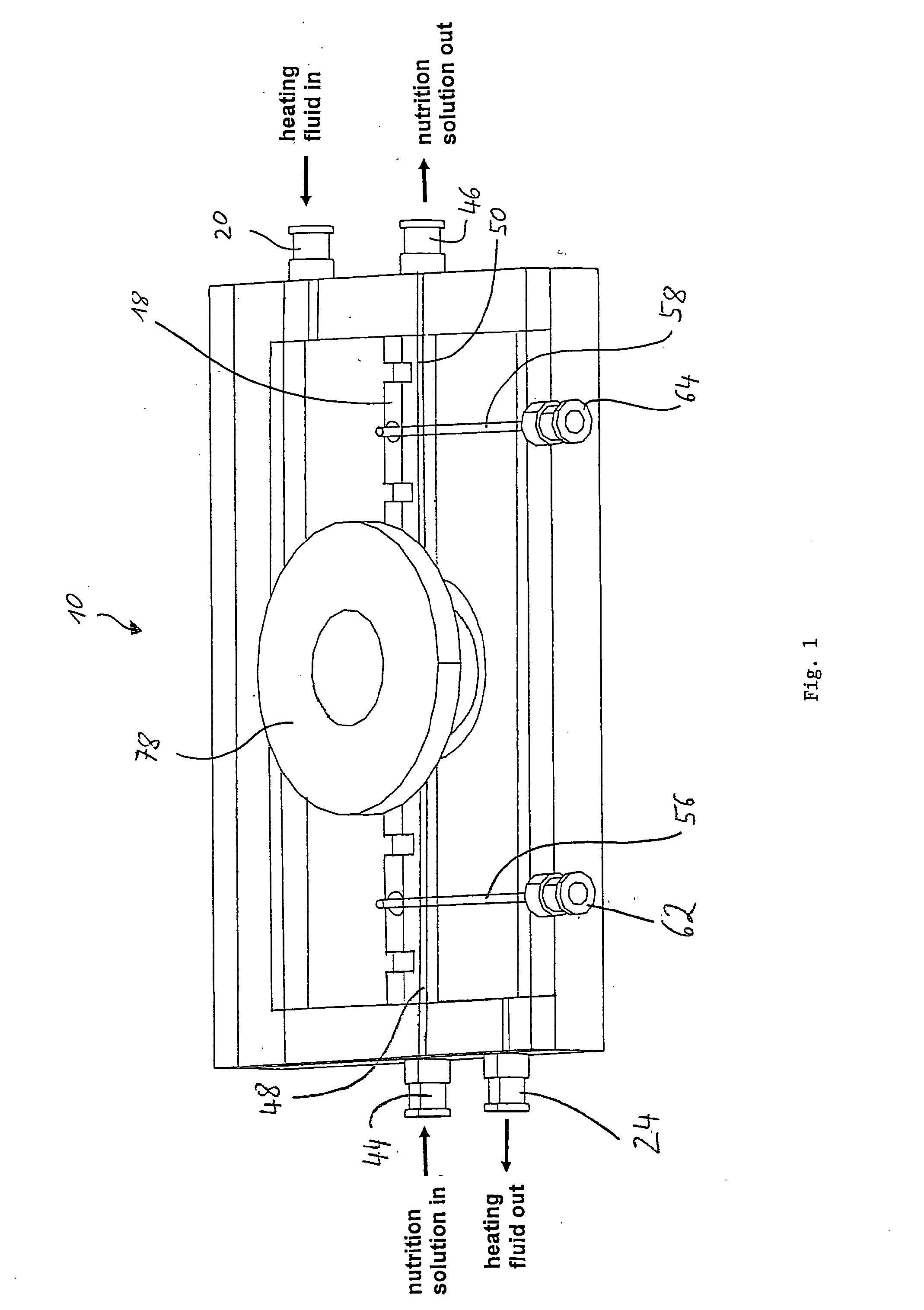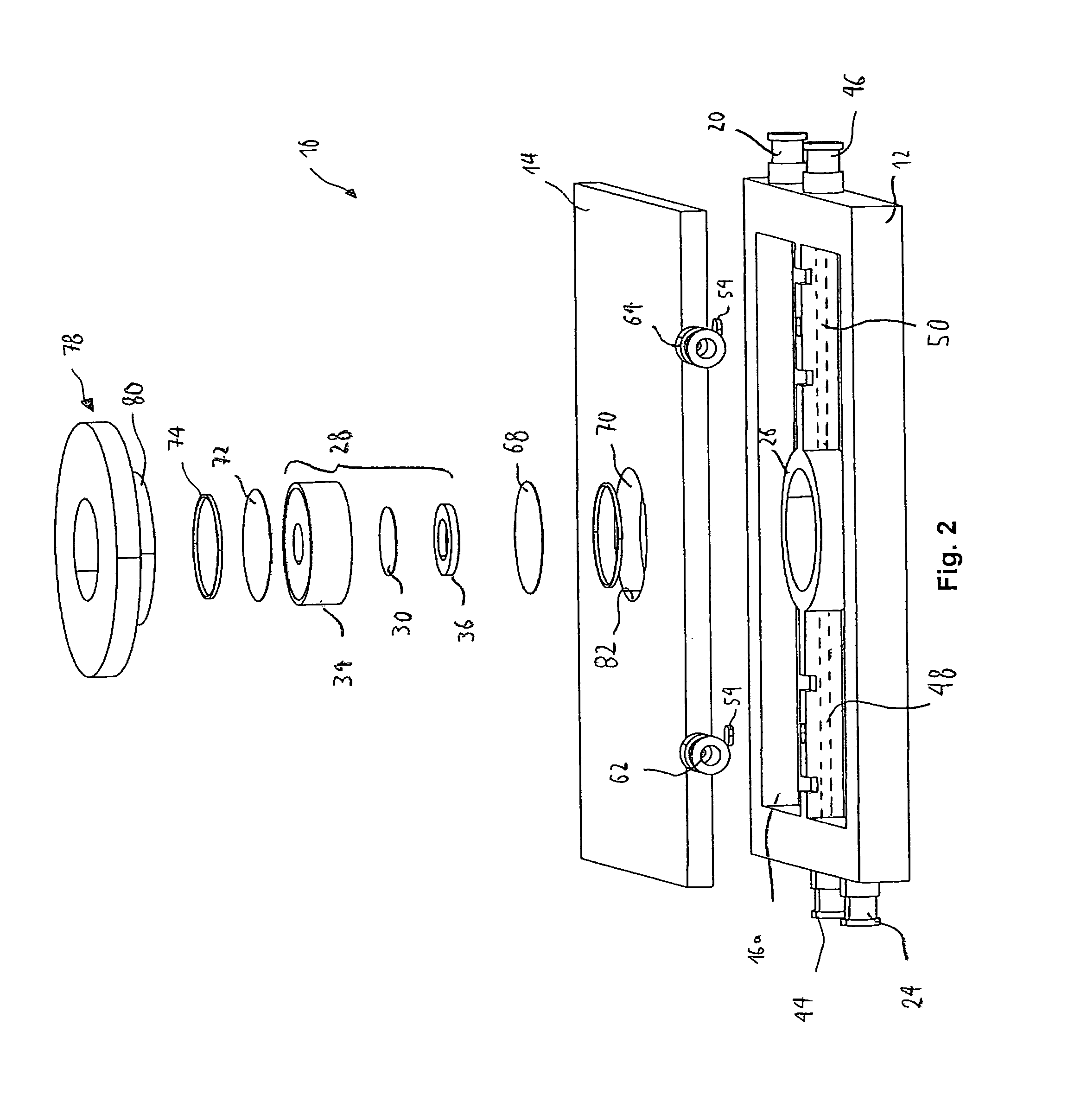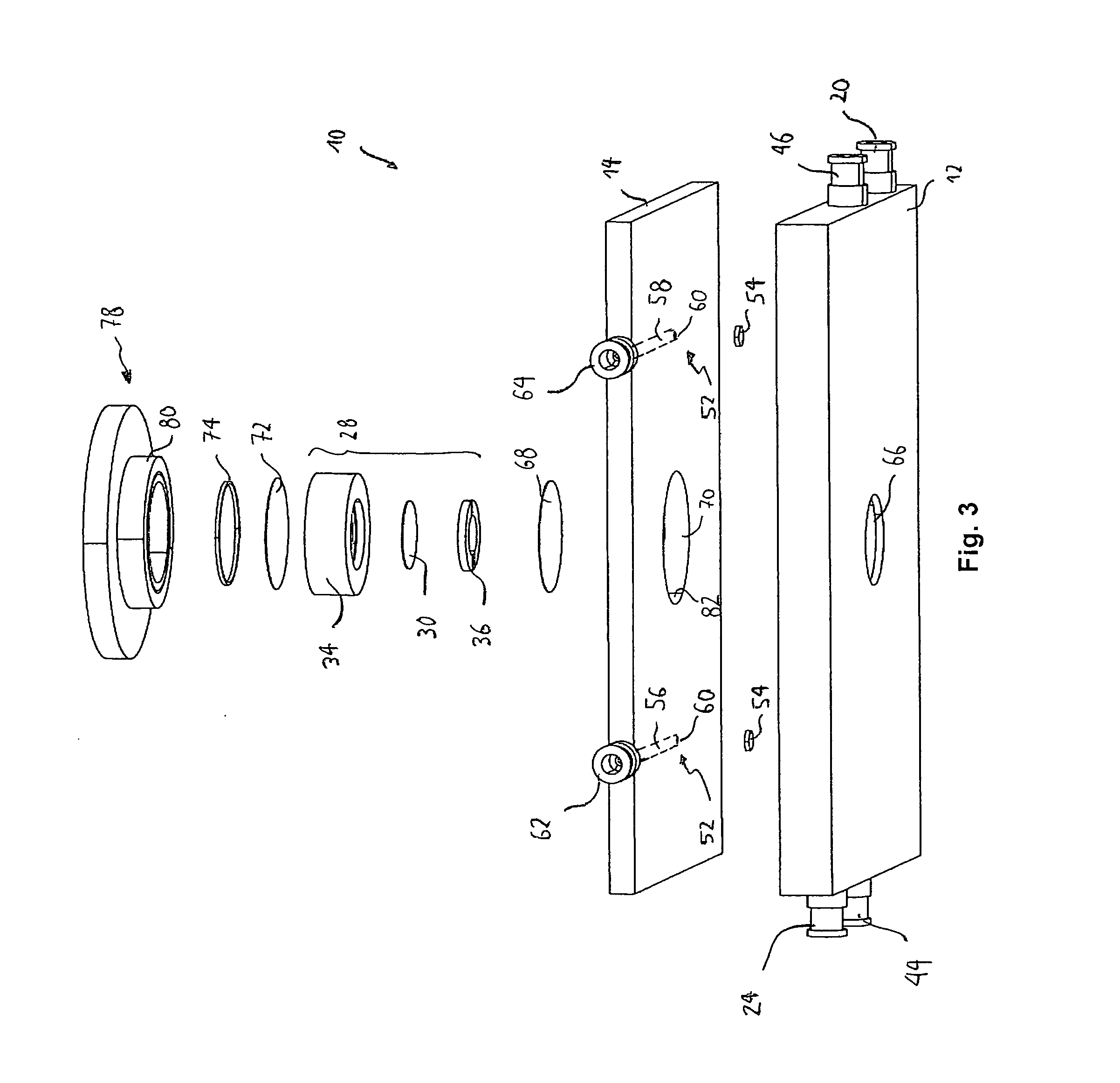Method of examining tissue growth and conditioning of cells on a scaffold and a perfusion bioreactor
a perfusion bioreactor and tissue growth technology, applied in biomass after-treatment, biochemical apparatus and processes, specific use bioreactors/fermenters, etc., can solve the problems of affecting the life of patients, thrombosis, injury or surgery, and the risk of significant risk or danger for patients, so as to improve the efficiency of heat exchange and facilitate the integration and assembly. , the effect of easy assembly
- Summary
- Abstract
- Description
- Claims
- Application Information
AI Technical Summary
Benefits of technology
Problems solved by technology
Method used
Image
Examples
Embodiment Construction
[0041]For the purposes of promoting an understanding of the principles of the invention, reference will now be made to the preferred embodiment illustrated in the drawings, and specific language will be used to describe the same. It will nevertheless be understood that no limitation of the scope of the invention is thereby intended, such alterations and further modifications in the illustrated device and method and such further applications of the principles of the invention as illustrated therein being contemplated therein as would normally occur now or in the future to one skilled in the art to which the invention relates.
[0042]FIG. 1 shows a perspective and partially transparent view of a bioreactor 10 in the assembled state according to an embodiment of the invention. The same bioreactor 10 is also shown in FIG. 2 which is a perspective, exploded view of the bioreactor 10 as seen from an upper angle, and in FIG. 3, which is the same exploded view as FIG. 2 but seen from a lower ...
PUM
| Property | Measurement | Unit |
|---|---|---|
| flow speed | aaaaa | aaaaa |
| flow speed | aaaaa | aaaaa |
| area | aaaaa | aaaaa |
Abstract
Description
Claims
Application Information
 Login to View More
Login to View More - R&D
- Intellectual Property
- Life Sciences
- Materials
- Tech Scout
- Unparalleled Data Quality
- Higher Quality Content
- 60% Fewer Hallucinations
Browse by: Latest US Patents, China's latest patents, Technical Efficacy Thesaurus, Application Domain, Technology Topic, Popular Technical Reports.
© 2025 PatSnap. All rights reserved.Legal|Privacy policy|Modern Slavery Act Transparency Statement|Sitemap|About US| Contact US: help@patsnap.com



